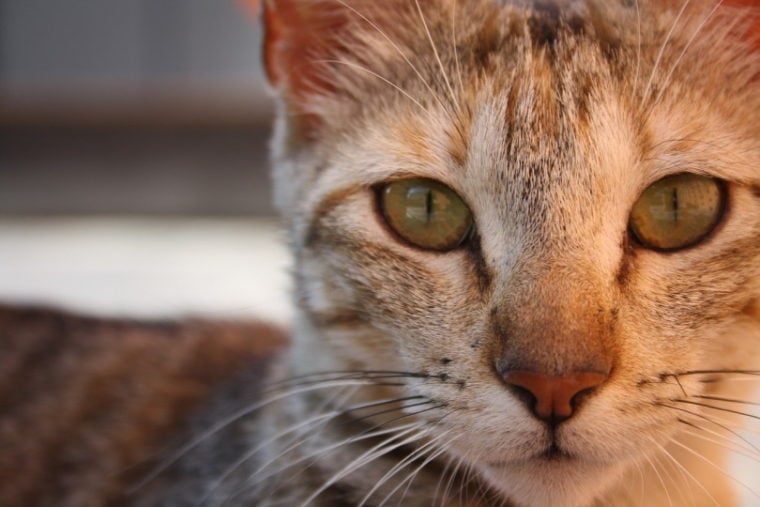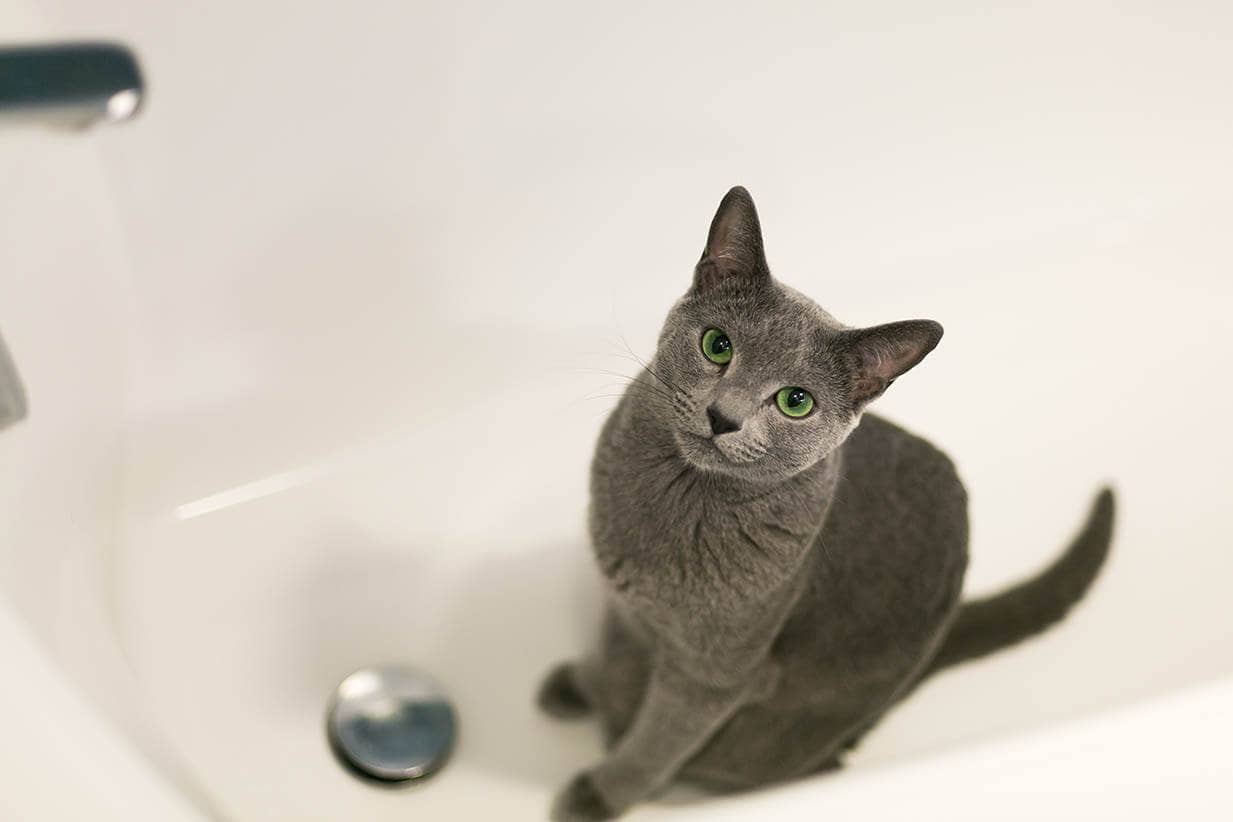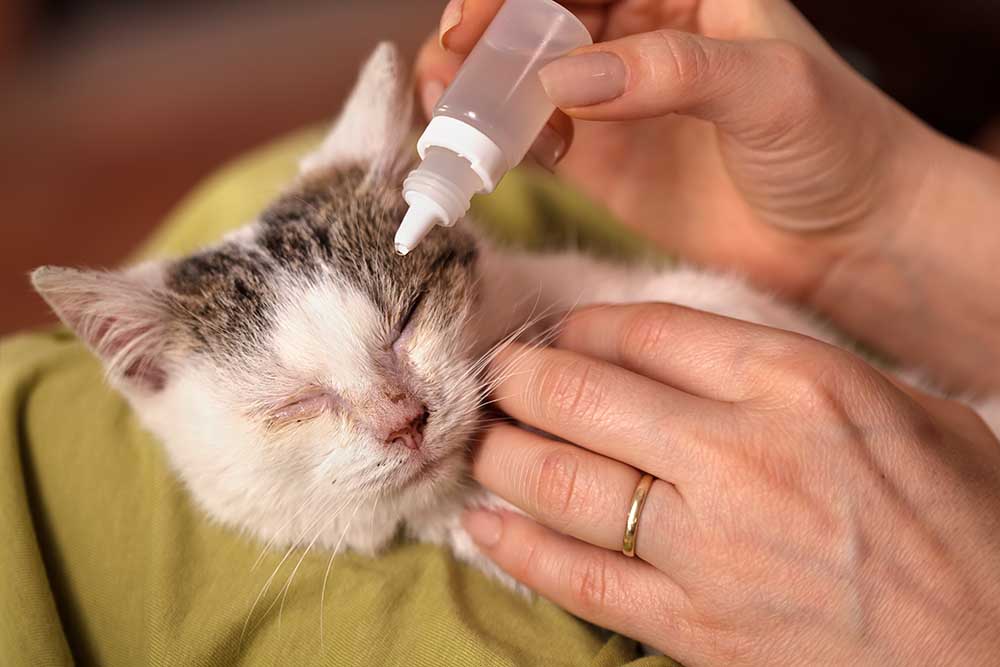
We love cats so much, even when we sometimes have to deal with the yuckier aspects, like litter boxes and eye discharge. But these things happen, and it’s always best to clean them up right away. So, what is the best method for cleaning up eye gunk?
Here are tips and a step-by-step guide for tackling this rather unpleasant job. Hopefully, you and your cat will come out the other end unscathed!
What Exactly Causes Eye Boogers?
First, let’s discuss why these gunky things happen. Some people call eye boogers “sleepies,” but the more official term is “rheum.”
Here are common reasons for discharge in your cat’s eyes.
If you suspect that there might be something wrong with your cat’s eyes beyond the occasional tearing up, please see your vet as soon as possible. Some of these conditions are quite serious!
Cleaning Up the Gunk
Before you tackle those eye boogers, you need to be physically and mentally prepared first. You’ll need:
- Gentle Care For All Pets - Infused with moisturizing hypoallergenic ingredients & enriched with...
- Deep Cleans From Head to Tail - Tackle the toughest dirt & messes with our extra strong pet wipes...
- Freshness On The Go - Each dog grooming wipes pack contains 30 counts of premium dog wipes that...
If you're looking for an easy, safe way to clean your pet well-formulated wipes like Hepper's Wash Wipes might be just the thing. These premium wipes are designed to gently and effectively remove the dirt and grime that sticks to your pets's fur. The hypoallergenic formula is infused with soothing, moisturizing ingredients that are safe for all life stages.
At Pet Keen, we've admired Hepper for many years, and decided to take a controlling ownership interest so that we could benefit from the outstanding designs of this cool pet company!

Now on to the task at hand: cleaning those eye boogers!
How to Clean Cat Eye Boogers (6 Steps)
1. Prepare the Water
It’s usually best to use sterilized water, which you can do yourself by boiling it and letting it cool down to room temperature. Pour the water into a clean bowl, and place it close to where you’ll be working with your cat.

2. Get Your Cleaning Materials Ready
You can use gauze, cotton pads, or a clean washcloth. Cotton balls tend to snag and leave bits behind unless you’ve purchased ones that are non-shedding. Ensure that what you use is soft and won’t irritate or scratch your cat’s eyes.
3. Get Your Cat Ready
This part depends on your cat. If your cat is an easygoing and laidback kitty, you can probably do this part by yourself and maybe even without the towel or blanket. In this case, you can place your cat on your lap in whatever way that makes you most comfortable.
If you anticipate that your cat won’t sit still for this procedure or is particularly moody about being handled, this is where the blanket or towel will come in handy, and probably another person. You’ll want to wrap up your cat in the towel, a method commonly known as a kitty burrito.
This can help keep your cat restrained and you safe from their claws. Plus, some cats like being wrapped up, and it makes them feel secure. Just ensure that the towel or blanket is big enough (but not too big) for your cat.

4. Let the Cleaning Commence
Now that your cat is ready to go, take whatever you’re using to clean your cat’s eyes, dip it in the warm and sterilized water, and squeeze out the excess. Start in the corner of your cat’s eye, and wipe away or outward from the eye. Use a fresh cotton pad or new corner/section of your washcloth, re-wet it in the water, and wipe the other eye.
You mustn’t accidentally get any of the gunk into either of your cat’s eyes, as this can spread any bacteria and cause an infection. Always use a fresh pad or section of the washcloth every time you wipe your cat’s eyes.
If the discharge is particularly stubborn, you might need to press the moistened pad on the spot for a minute or so to help loosen it before you start wiping.
There are also eye wipes that you could purchase and use. Just make sure they are made for an animal’s eyes and don’t contain any harsh ingredients like alcohol. But clean pads or gauze in warm water work just as well.
5. Apply Any Eye Medications
Once the gunk is gone, if you have any eye drops or ointments that your vet prescribed, this is when you’ll want to use them. It’s always best to clean your pet’s eyes before using any medication, so it will work more effectively.

6. Give Treats!
You’re done! Now you should give your cat a treat for being so good — or at least for not scratching you to bits. Make it something special and don’t forget to treat yourself!
Conclusion
Most cats have eye boogers sometime during their lives, which is usually normal and nothing to worry about. But when there’s more noticeable discharge than usual combined with other signs, like your cat squinting or frequently pawing at their eyes, you should get them to the vet.
Never use eye drops that are for people or for a previous infection for your cat’s eyes. If there’s even a hint that your cat might have something wrong with their eyes, your first port of call should always be your vet.
Featured Image Credit: enrikap, Pixabay









